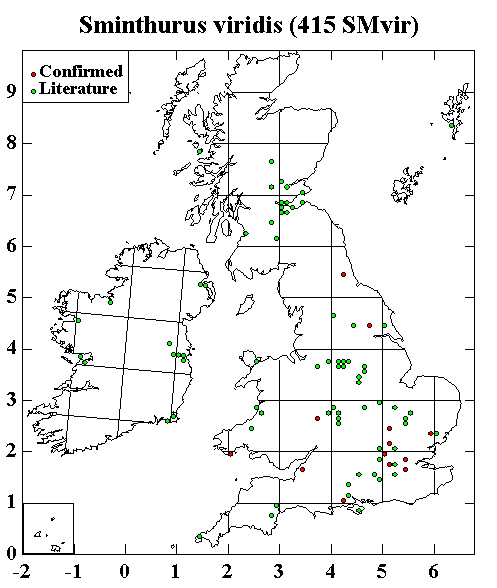|
Sminthurus viridis is a widespread and very common species found in a wide variety of habitats including grasslands and crops such as clover. The species has been introduced to Australia where it is a serious pest of legumes and is known as the 'Lucerne Flea'.
Sminthurus viridis is a relatively large greenish or yellowish brown springtail reaching 3.0 mm in length. The fourth antennal segment (ant4) is divided into 18 subsegments. Some setae on the third antennal segment (ant3) are longer than others. Both edges of the mucro are smooth (Fig. 1). The female sub-anal appendages (SAA) are not branched at the tip. The empodium on the foot is longer than the claw and bears a long filament (Fig. 2).
Sminthurus viridis is almost identical in appearance to Sminthurus nigromaculatus. The only differences are in the colouration of the dorsal side of the sixth abdominal segment (no spots in Sminthurus viridis - two dark spots in Sminthurus nigromaculatus) and the number of setae on the subcoxa of the third leg (one in Sminthurus viridis (see Fig. 3) two in Sminthurus nigromaculatus). The few specimens labelled 'Sminthurus nigromaculatus' in the NHML slide collection all have one seta on the subcoxa of the third leg, as do all the specimens labelled Sminthurus viridis. Even if it is a good species (which seems open to doubt), there is no categorical evidence that Sminthurus nigromaculatus has ever been collected in Britain or Ireland.
Back to main page
|
|







